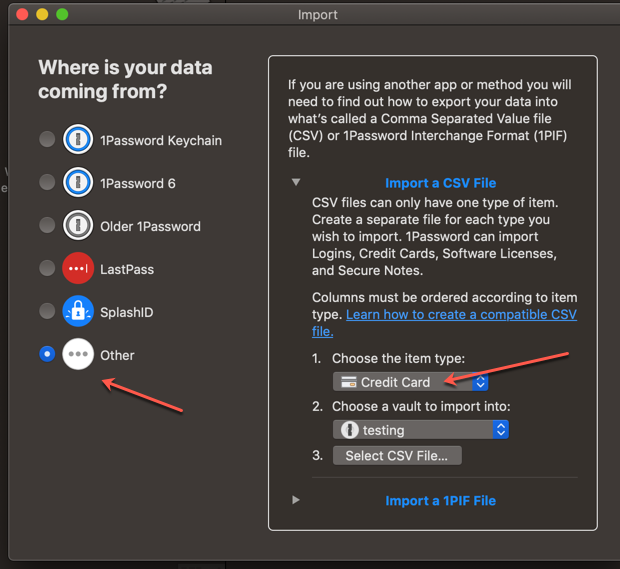

This most likely points to a situation where your original password contained a quote (for example abc"123) which was then escaped by the KeePass export process (converting the above example to abc\"123), leading to issues logging in since the password is no longer correct. One of the scarier issues you might run into is finding that your passwords appear to be wrong when logging into services using the details stored in 1Password. This presents itself in a couple of ways: Broken Logins

The CSV export from KeePass escapes quotation marks (converting " to \") and the 1Password import process doesn’t always handle this very nicely. Enjoy 1Password! Fixing Data Import Issues Go through any of the items that you modified and fix the notes!Īnd now you’re done. If you had to clean up any of the data in the original CSV file (using the steps in the “Fixing Import Data Issues” section), now is a good time to fix any badly quoted text or escaped quotations.It’s best to keep a copy available just in the (hopefully unlikely) situation that you need an older password or want to see what changed on that entry over time. Although you’ve imported all of your logins into 1Password, you won’t have access to any of the password histories that were stored in KeePass. Save a final copy of your KeePass kdbx file in a safe location.As the final step in the import process says, this is a good time to permanently delete the unencrypted CSV file that you generated!.Your data should now be imported! There are a few things that are worth doing before you consider the process complete though: Open KeePass and the password file you want to export.Now that you have a backup, rather than spending time exporting old entries only to delete them later I definitely recommend cleaning them up in KeePass at this step. Clear out old entries that you won’t want later.Your passwords are important and whenever you’re doing something like this, first start with a backup! Get a copy of your kdbx file and keep it somewhere safe just in case you run into any problems further in the process. After giving it a go though, I can tell you it was actually ridiculously easy and straightforward and didn’t require any external tools or scripts! As such, I decided to put together this step-by-step tutorial for migrating your data from KeePass to 1Password! Steps Preparation Yeah, as you can imagine that’s not a great solution.Īnyway, I wanted to move over to 1Password but when I tried searching for “Migrate KeePass to 1Password” I kept seeing references to 3rd party scripts I’d need to use to convert my exported data (no thanks) or that it would require a bunch of manual data entry. KeePass is an excellent (open source!) piece of software, but since it stores passwords in a single database file the only way that I could really sync it between multiple computers and my phone was to store that file… in Dropbox. I’ve been using KeePass for my password management needs since early 2014, but I recently decided that I wanted to move to something a bit more substantial.


 0 kommentar(er)
0 kommentar(er)
